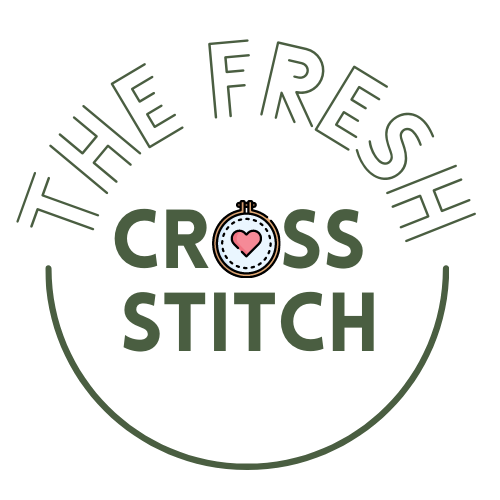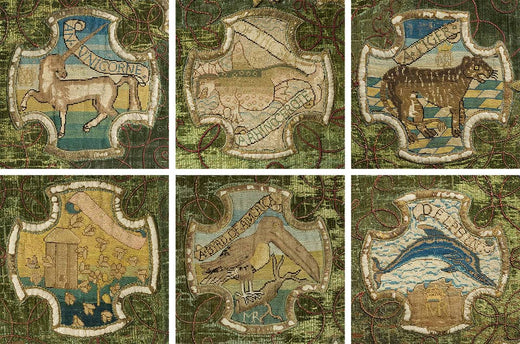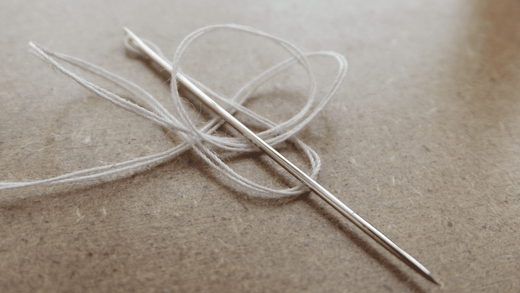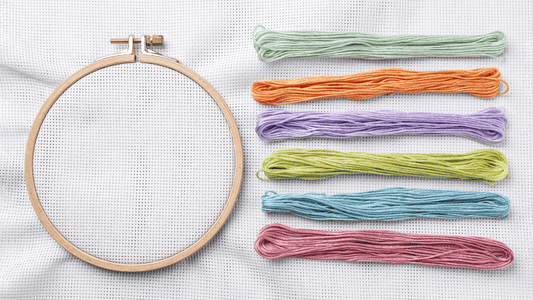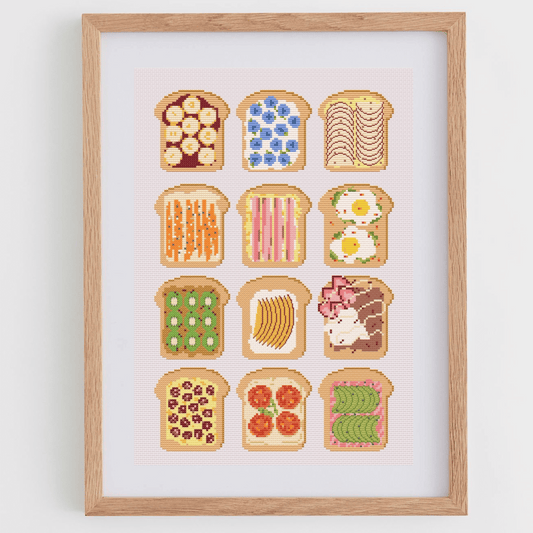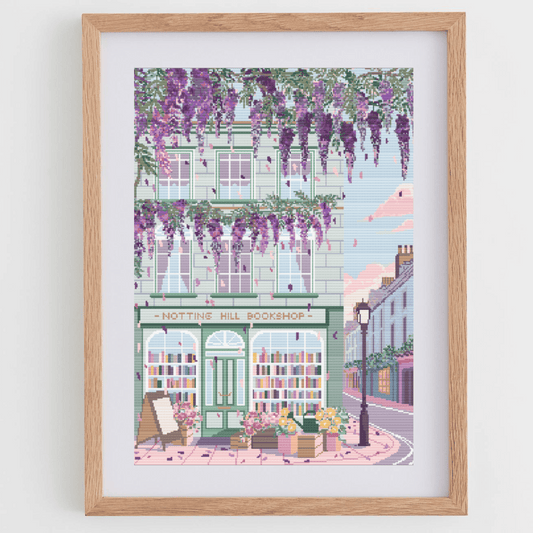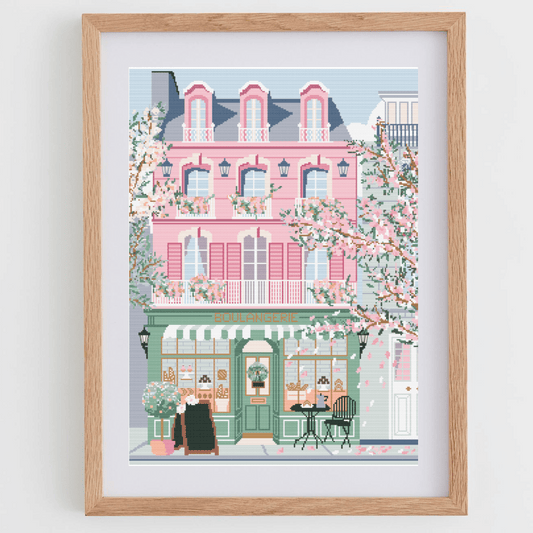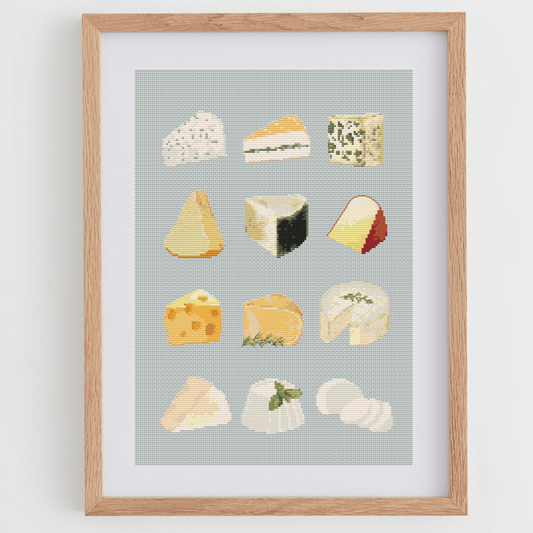Cross-stitch is a timeless craft that has woven its way through centuries. It stands as a testament to human creativity and the artistry of needle and thread. Have you ever wondered how cross-stitch began? What’s the oldest known cross-stitch piece that we have today? Where was it found? Today we explore the history of cross-stitch and unravel the origins, evolution, and enduring appeal of this intricate form of needlework.
1. The origins of cross stitch during the Han Dynasty (206 BCE – 220 CE)
Cross stitch finds its roots in ancient times, with evidence suggesting its existence in civilizations such as the Han Dynasty in China (206 BCE – 220 CE). However, it wasn't until the Middle Ages in Europe that cross-stitch began to take its recognizable form. Initially, it was employed as a practical method to mend and decorate household textiles. Some historians suggest that cross stitch may have originated in China during the Han Dynasty, since fragments of cross-stitch embroidery have been found in tombs from this period.
While these examples offer glimpses into the ancient origins of cross stitch, it's important to note that textiles from earlier periods may not have survived, making it challenging to pinpoint the absolute oldest cross-stitch pieces with certainty. The craft evolved over time and became more prominent during the Middle Ages and Renaissance, leaving a richer historical record from those periods onward.
2. Rise in Popularity during the Renaissance (14th-17th centuries)
By the Renaissance period, cross stitch had evolved from a utilitarian craft to a favored pastime among the upper classes. Needleworkers showcased their skill by creating elaborate and ornate designs, often incorporating religious motifs and floral patterns.
Cross stitch became a symbol of status and refinement, adorning the homes of royalty and nobility, and also serving a way to illustrate epic historic moments. Two good examples of embroidery pieces from this period include the Bayeux Tapestry and Marian Hanging.
The Bayeux Tapestry, an iconic piece from the 11th century that incorporates intricate stitching techniques, including cross stitch. This historical artifact not only narrates the story of the Norman Conquest but also showcases the early use of cross stitch in depicting detailed scenes. This piece is famous for including stitching techniques such as crewel embroidery, stem stitch, split stitch, and bayeux stitch among many others. However, the cross-stitch technique in this piece is scarce, and this tapestry is not considered the oldest known piece of cross stitch.
Mary Queen of Scots was known to have a passion for needlework, and some of her prison embroideries have survived through the centuries. During her imprisonment, she had the time to embroider different pieces, some of them including cross-stitch techniques as well. This cross-stitch embroidery piece belongs to the Marian Hanging (1570-85), and it is attributed to Mary Queen Scots and members of the household. It now belongs to the Victoria and Albert Museum.

© Victoria and Albert Museum, London
What is the oldest known cross-stitch piece?

© Victoria and Albert Museum, London
Although this piece is not currently on display, it used to be displayed at the Victoria and Albert Museum in London.
3. Cross stitch across cultures: The Rise of vyshyvanka (17th and 18th centuries)
As exploration and trade expanded in the 17th and 18th centuries, cross stitch spread across continents. Different cultures embraced the craft, infusing their unique styles and patterns. From samplers in Colonial America to the vibrant folk designs of Eastern Europe, cross stitch became a global art form, reflecting the diversity of human expression.
The Ukrainian tradition of creating intricate cross-stitch motifs on clothing, known as vyshyvanka, is a vivid illustration of how cross stitch became deeply embedded in cultural identity. The word "vyshyvanka" is derived from the Ukrainian word "vyshyvaty," which means "to embroider."
4. Victorian Era: The Beginning of the Sampler Tradition (19th and 20th centuries)
The 19th century witnessed a resurgence of interest in cross stitch, particularly during the Victorian era. Young girls often created samplers as part of their education, showcasing alphabets, numbers, and moralistic verses. These samplers, now cherished heirlooms, provide a window into the lives and values of the past.

5. 20th Century: Revival and Modern Innovations
While the industrial revolution introduced new methods of textile production, cros stitch remained a beloved craft, transitioning from a necessity to a leisure activity. The 20th century saw the emergence of cross-stitch kits, making the craft more accessible to a wider audience.
During this period, DMC played a crucial role by introducing innovation in the crafting world. Yes, the thread brand we still use today is responsible for expanding cross stitch and embroidery thanks to their revolutionary production processes. While this company was founded in 1746 in Mulhouse, France, its contributions during the 20th century made it easier for enthusiasts to engage in the craft. The colorfast dyeing techniques, the standardized numbering system for threads, and the introduction of cross-stitch kits and patterns are some of the contributions of this company.
6. Contemporary cross stitch
In the 21st century, cross stitch continues to captivate enthusiasts worldwide. The craft has found its place in the digital age, with online communities sharing patterns, tips, and finished projects. Contemporary cross-stitch artists push boundaries with avant-garde designs, blending tradition with modern aesthetics.
Today, modern innovations such as digital cross-stitch patterns and a resurgence of interest in handmade crafts have breathed new life into cross stitch.
The history of cross stitch is a rich tapestry woven through time, connecting generations and cultures. From its humble beginnings as a practical necessity to its status as a beloved artistic expression, cross stitch remains a testament to the enduring power of creativity and the timeless allure of handcrafted beauty. As we stitch our way through the present and into the future, the threads of this ancient craft continue to bind us together in a shared appreciation for the artistry of needle and thread. Are you ready to embark on this ongoing journey through history?
